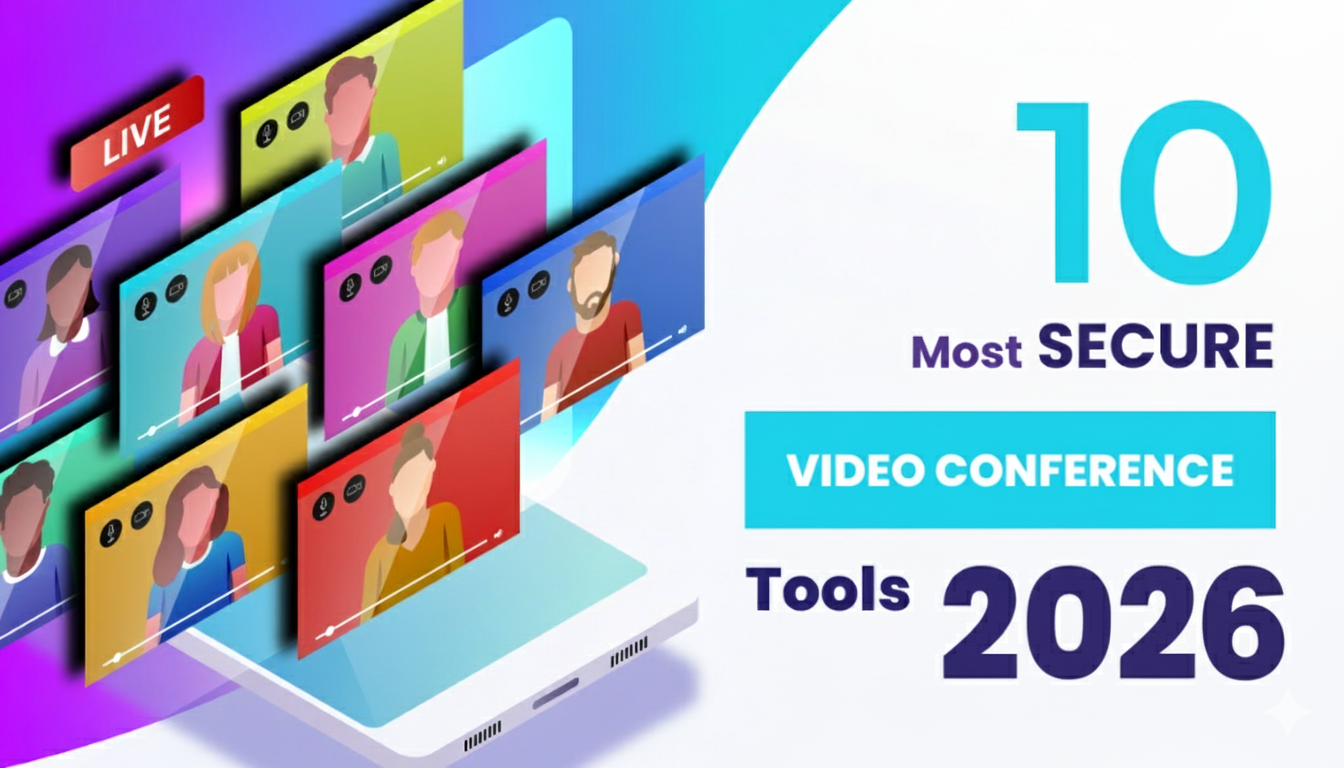The global workforce has seen an interesting shift towards remote work in recent years, largely driven by technological advancements and rapidly changing dynamics in companies. This change comes with demands for secure video conferencing solutions, which have now played a crucial role in modern business communication. The need for reliable and secure video conferencing tools continues to grow as teams and professionals have now become accustomed to collaborating across the globe, narrowing the physical distance by meeting virtually.
This article explores 10 of the most secure video conferencing tools in 2026, with an emphasis on their features such as in-built security measures and their user-friendliness in assisting businesses to make informed decisions and motivate workers to engage in collaboration with teammates.
Video Conferencing
Video conferencing is a software that has been regarded as a powerful communication tool because it promotes virtual collaborations between users from different geographical locations. This technology enables real-time communication via audio and video input and is meant to replicate face-to-face communication. Implementation of video conferencing software has become essential for businesses and people who may be on the lookout for efficient and cost-effective ways to communicate and collaborate remotely, as there has been a significant rise of remote workers across global business operations.
Teams can conduct meetings, webinars, and training sessions within the company by utilizing video conferencing software. These interactions can be held with ease and are rather useful for enhancing productivity. Companies that work with clients based in other countries can carry out negotiations and consultations via video conferencing software. However, not all video conferencing tools can be used by all fields of work and the key to optimal performance relies on selecting the right tool for one’s field of work.
Criteria for Selection
Selecting the most suitable video conferencing tool for a business is crucial as it has a significant impact on communication, collaboration, and data security. These are some factors to consider before deciding on what tool to use, and they were all considered when compiling the list given afterwards:
Security
The confidentiality and security of data shared within the meetings are of utmost importance as discussions may be sensitive and could potentially cause unnecessary drawbacks if unauthorized personnel can access the data. A secure video conferencing tool must be equipped with robust security features such that they enable end-to-end encryption of data, provide multi-factor authentication for users and have certain data transmission channels.
User-friendliness
Given that a plethora of people are to use this tool to communicate, the interface of the software must be streamlined such that it is to use even for a tech novice. The interface has to be intuitive and have smooth navigation. It is also crucial that the learning curve of a a software is short, and usage requires minimal training.
Quality
Video conferencing attempts to recreate face-to-face interactions, for which good audio and video quality are integral. Users can only effectively communicate when the visuals are clear and the audio isn’t hindered by static or other interruptions. Video conferencing tools equipped with adaptive bitrate streaming can adjust the quality of the video and audio depending on the user’s internet connection.
Accessibility
Remote workers are usually required to use multiple devices to stay connected with their teammates, so the video conferencing tool must be accessible on many kinds of devices and operating systems. The tool must be compatible with the browser and as a mobile application.
Top 10 Most Secure Video Conferencing Tools - 2026
Microsoft Teams
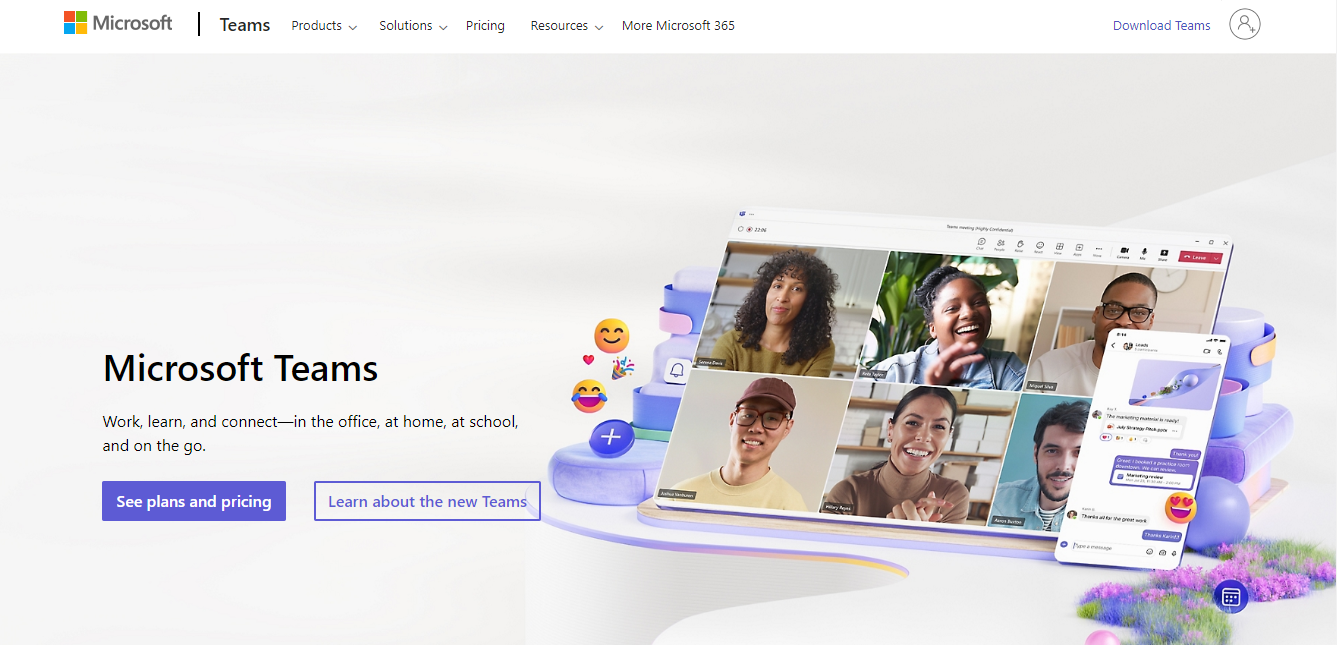
Key Features
- High-Quality Video and Audio
- Integrated with Microsoft 365
- Enhanced Security Measures
- Real-time Chat and Collaboration
- Third-Party App Integrations
Pros
- Familiar interface for Microsoft users
- Robust security and compliance
- Versatile collaboration tools
Cons
- Overwhelming for new users
- Advanced features require licenses
- Limited support for external participants
Google Meet
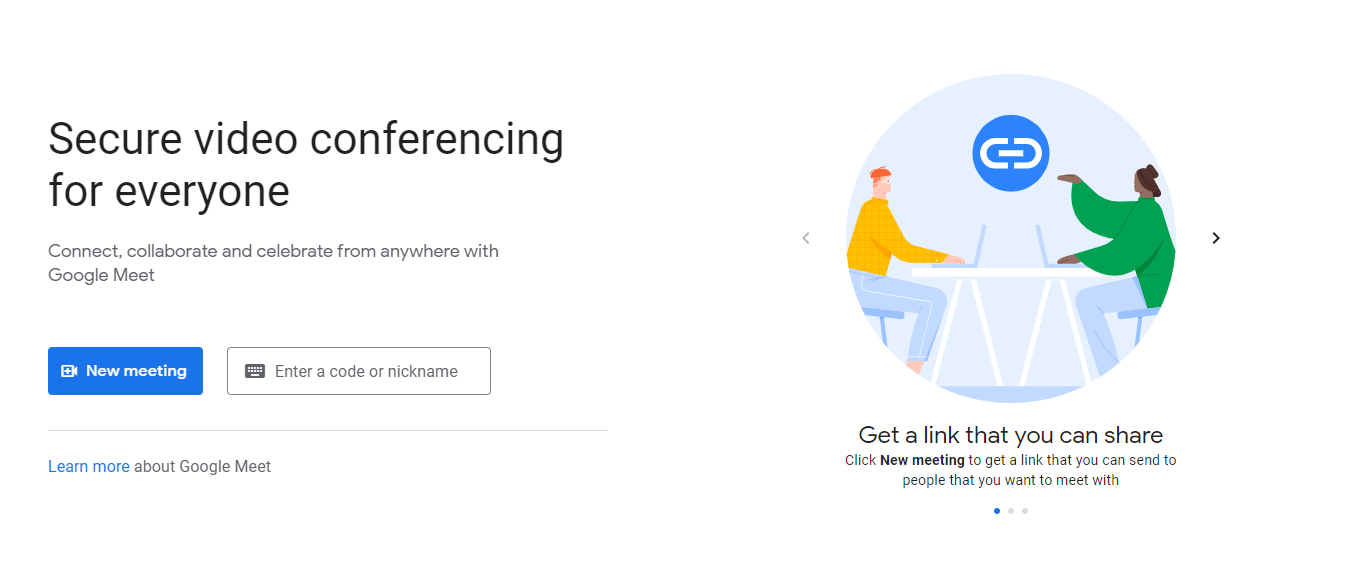
Key Features
- Seamless Integration with Google Workspace
- Web-Based Access with No Installation Required
- Real-Time Captioning and Translation
- Secure, Encrypted Video Meetings
- Screen Sharing and Collaborative Document Editing
Pros
- User-friendly interface
- Integrates with Google Calendar
- Reliable performance
Cons
- Limited feature set
- Free version has limitations
- Limited customization
Zoom
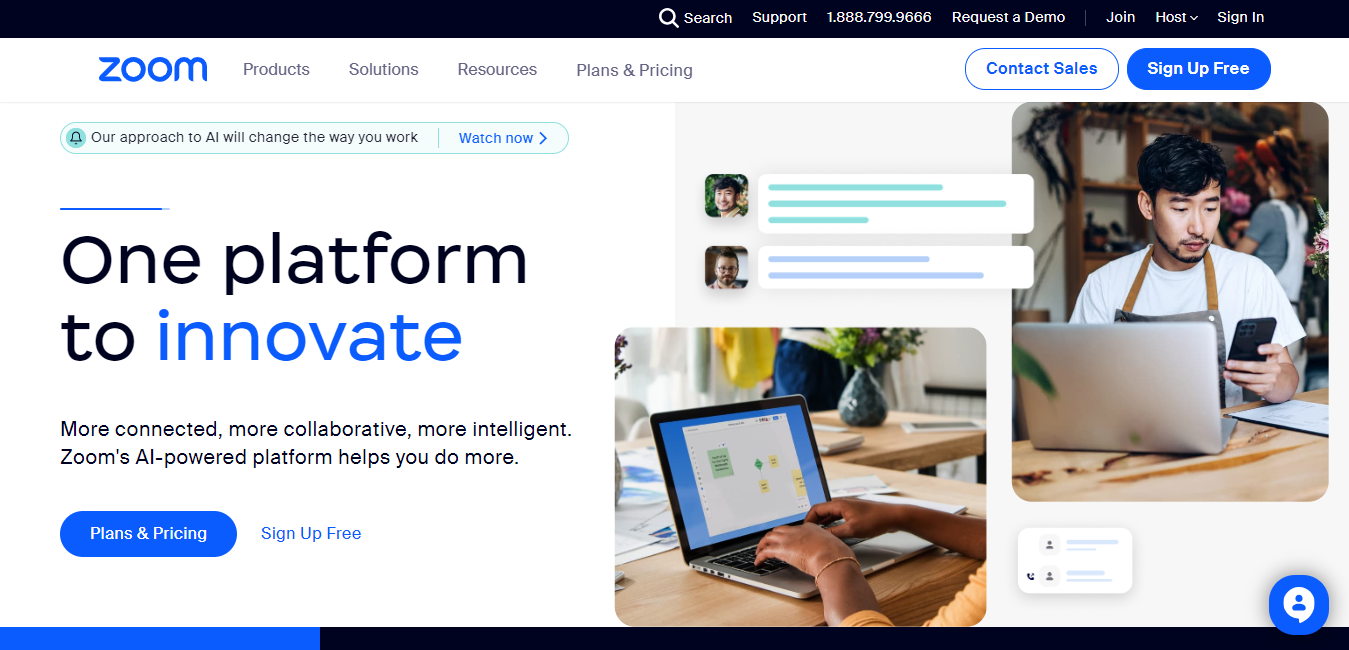
Key Features
- Support for Large-Scale Meetings
- Virtual Backgrounds and Filters
- Breakout Rooms
- Interactive Features
- Cloud Recording and Automatic Transcriptions
Pros
- Intuitive and user-friendly
- Cross-platform compatibility
- Reliable performance
Cons
- Limited meeting duration (free)
- Frequent updates can be disruptive
- Limited control over participants
WebEx Meetings
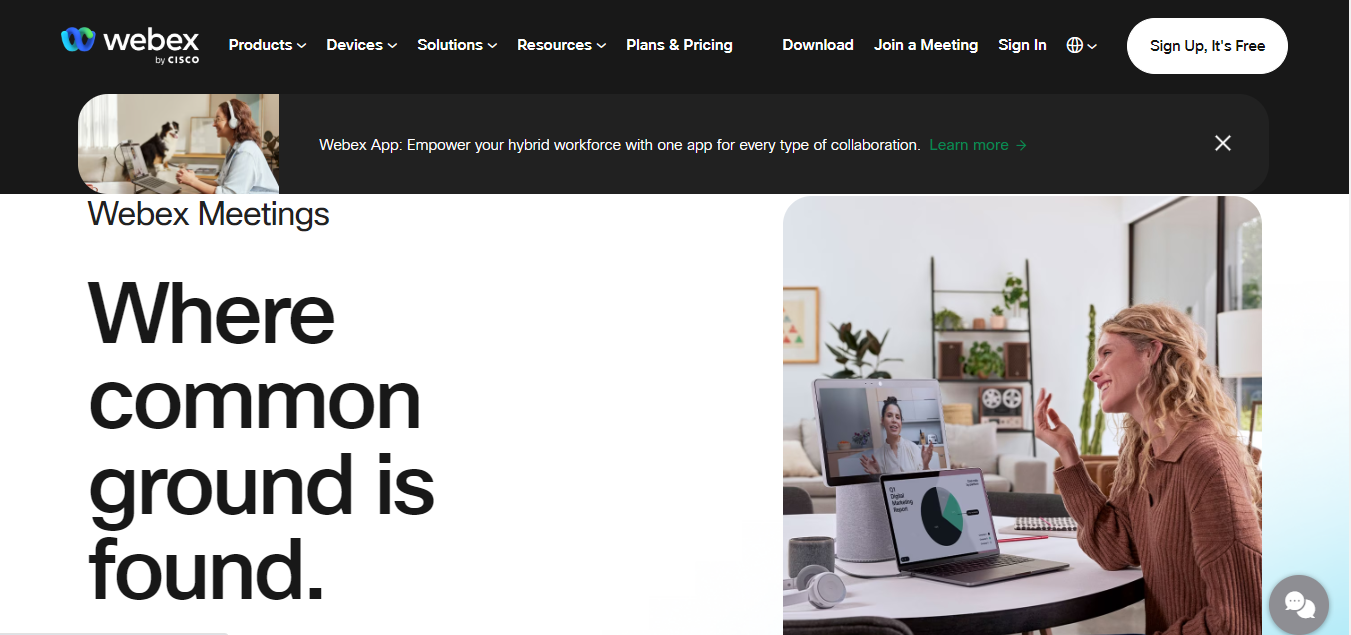
Key Features
- HD Video and High-Quality Audio
- Screen Sharing and Annotation Tools
- Breakout Sessions
- End-to-End Encryption
- Integration with Productivity Tools
Pros
- Reliable and stable
- Cross-platform support
- Excellent customer support
Cons
- Learning curve for new users
- Limited customization
- Advanced features have extra costs
Skype
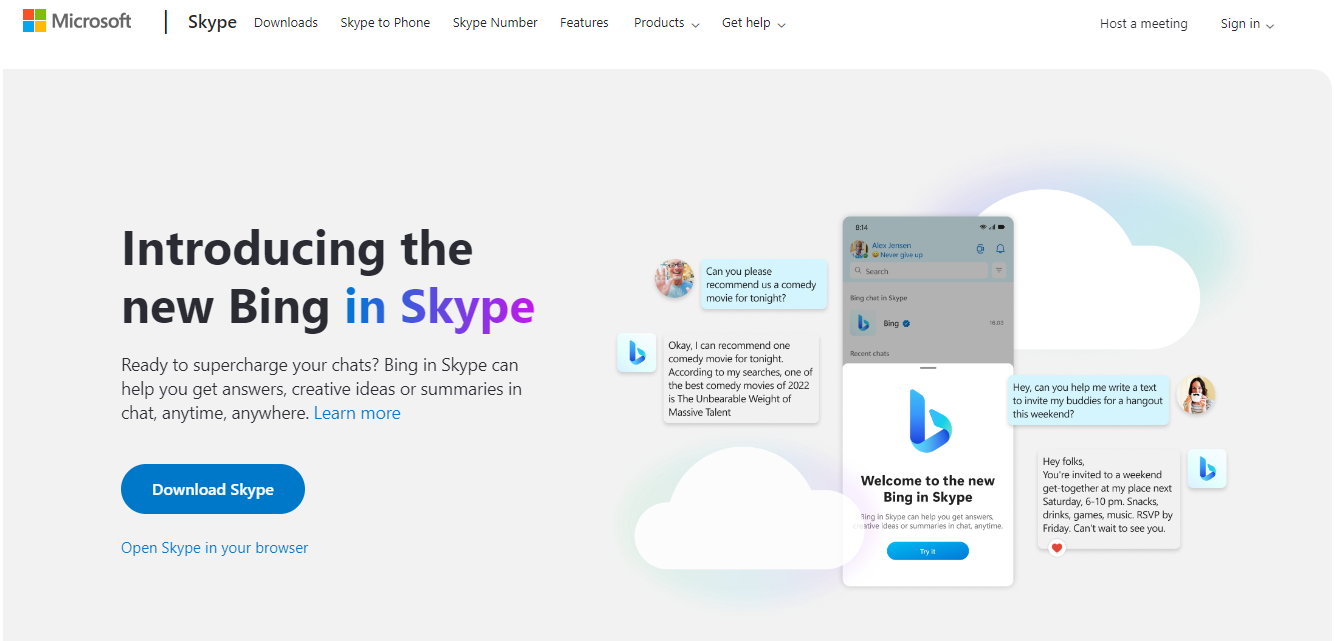
Key Features
- High-Quality Video and Audio
- Instant Messaging and File Sharing
- Screen Sharing and Call Recording
- End-to-End Encryption
- Cross-Platform Compatibility
Pros
- Familiar interface
- Reliable and stable
- Cost-effective international calls
Cons
- Limited advanced features
- Not for large-scale webinars
- Limited integrations
Slack
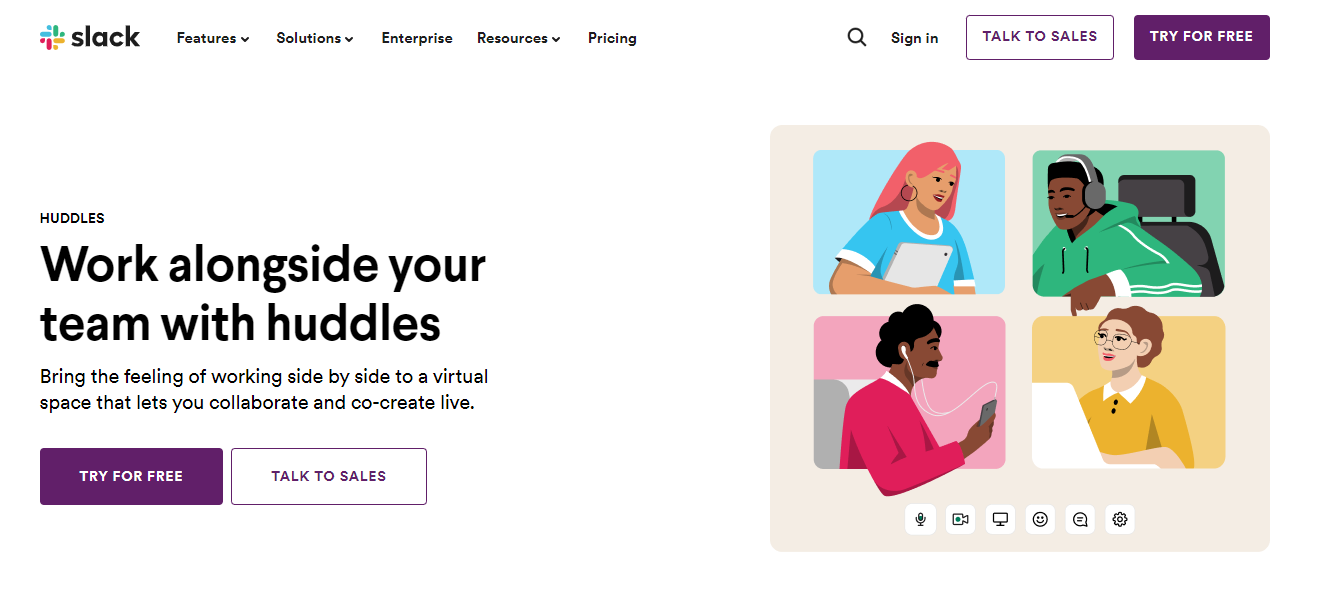
Key Features
- High-Quality Video and Audio
- Instant Messaging and File Sharing
- Screen Sharing and Collaboration Tools
- End-to-End Encryption
- Integration with Productivity Apps
Pros
- User-friendly interface
- Enhanced team collaboration
- Reliable with good notifications
Cons
- Limited advanced video features
- Not for large-scale webinars
- Notifications can be disruptive
LiveStorm
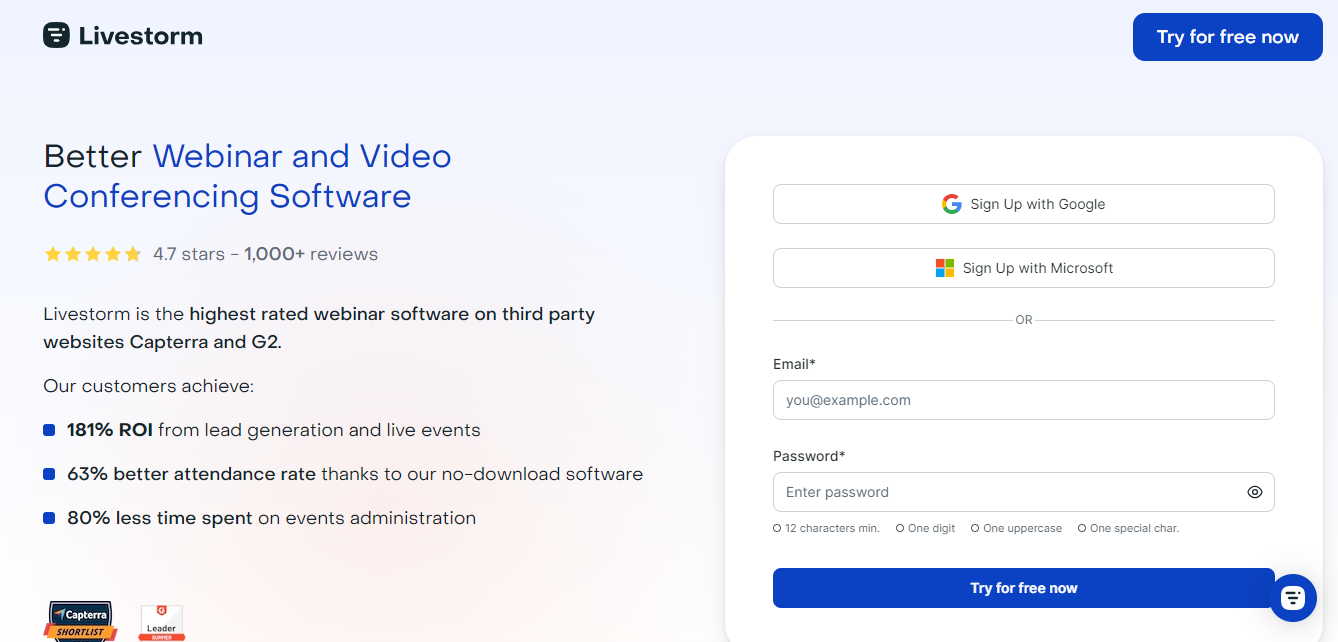
Key Features
- High-Definition Video and Audio
- Interactive Webinars and Polls
- Screen Sharing and Collaboration Tools
- End-to-End Encryption
- Integrations and Analytics
Pros
- Intuitive UI
- Scalable and reliable
- Customizable branding
Cons
- Limited free plan
- Higher-tier plans are pricey
- Occasional connectivity issues
Jitsi Meet
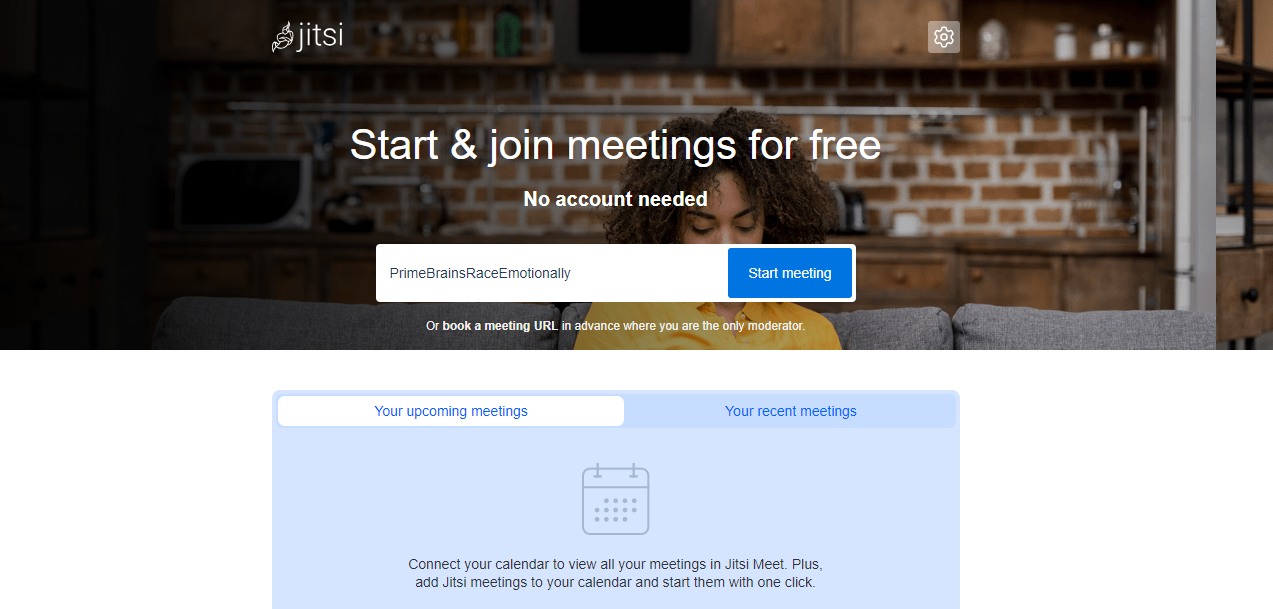
Key Features
- High-Quality Video and Audio
- Web-Based Access with No Installation Required
- Screen Sharing and Collaboration Tools
- Secure and Private Communication
- Customizable Interface and Open-Source
Pros
- User-friendly
- Free and open-source
- No account required
Cons
- Limited advanced features
- Depends on internet bandwidth
- Limited integrations
Gather
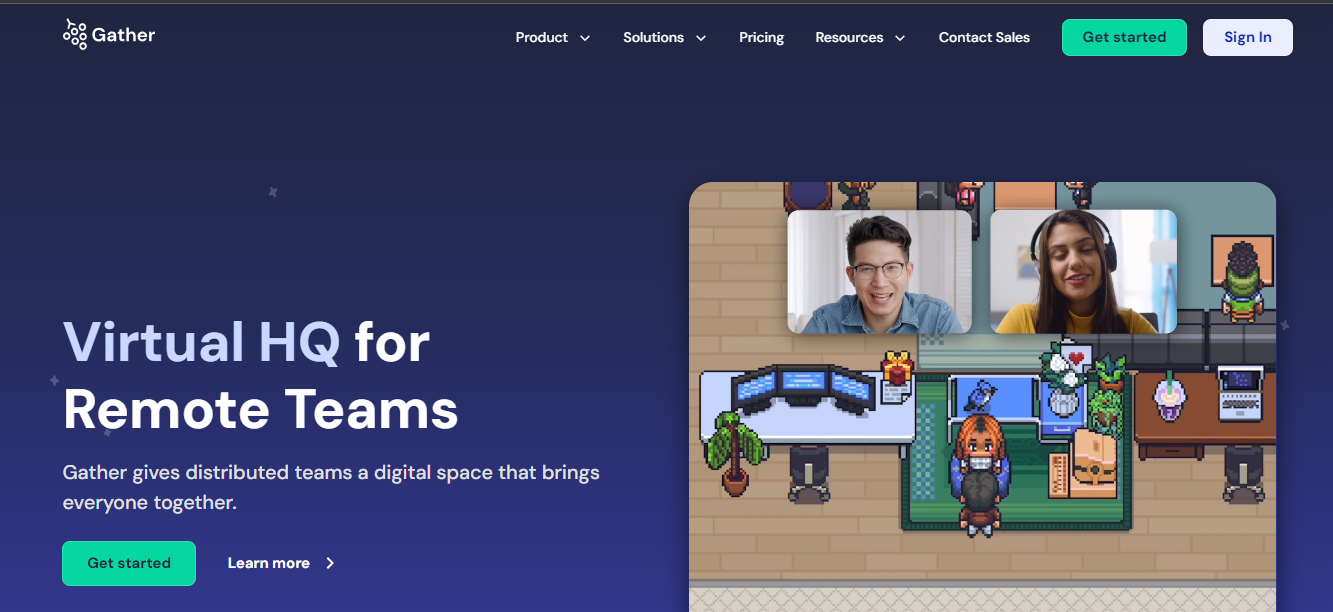
Key Features
- Interactive Virtual Spaces
- Customizable Meeting Layouts
- Real-Time Video and Audio
- Screen Sharing and Collaboration Tools
- Secure and Private Meetings
Pros
- Immersive virtual spaces
- Customizable layouts
- Easy onboarding
Cons
- Limited advanced features
- Depends on internet bandwidth
- Not for large-scale webinars
Blue Jeans Virtual Meeting
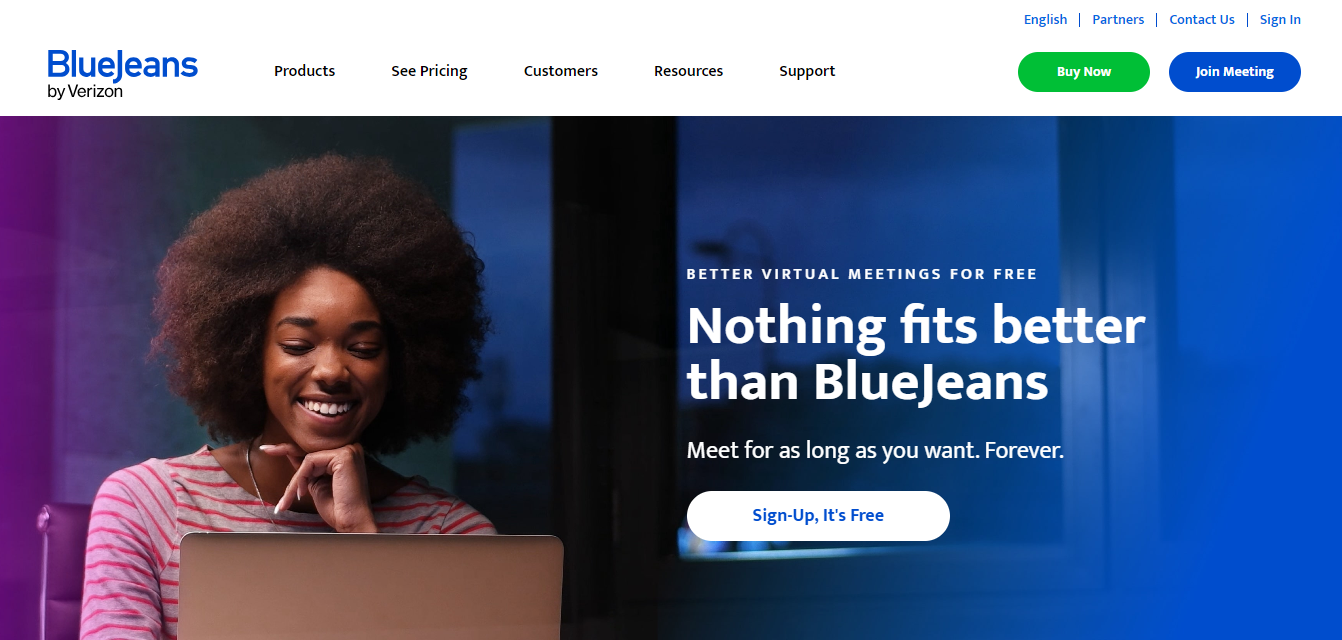
Key Features
- High-Quality Video and Audio
- Screen Sharing and Collaboration Tools
- End-to-End Encryption
- Integrations and Analytics
- Customizable Meeting Options
Pros
- User-friendly
- Reliable and scalable
- Seamless integrations
Cons
- Limited free plan
- Advanced features require payment
- Limited customization
Comparison Table
| Tool | Key Features | Pros | Cons |
|---|---|---|---|
| Microsoft Teams |
|
|
|
| Google Meet |
|
|
|
| Zoom |
|
|
|
| WebEx Meetings |
|
|
|
| Skype |
|
|
|
| Slack |
|
|
|
| LiveStorm |
|
|
|
| Jitsi Meet |
|
|
|
| Gather |
|
|
|
| Blue Jeans Virtual Meeting |
|
|
|
Conclusion
Secure video conferencing plays an indispensable role in modern business communication and collaboration given the implementation of remote work and the need for virtual interactions as opposed to face-to-face meetings. This article explored various platforms, highlighting their key features, pros, and cons to make it easier for future users to identify and adapt the platform that best fits their organization’s specific requirements.
It is of utmost importance that the video conferencing tools used by companies are secure, especially given the risk of data breaches and cyber threats given the times we live in. Businesses are urged to prioritize using tools that are equipped with end-to-end encryption, and multi-factor authentication, and comply with industry security standards to keep sensitive information away from potential threats and malpractices.
In conclusion, we can attest that each platform serves a specific purpose and therefore the ten mentioned in this article can be categorized according to specifications such that: organizations that seek integration of video conferencing with existing platforms can adopt the likes of Microsoft Teams or Google Meet while those who require extensive collaboration features and the ability to host large-scale meetings may benefit more from using Zoom or WebEx Meetings. Moreover, companies that wish to implement the use of a well-rounded platform that enables video conferencing, as well as interactive ways to enhance productivity and engage in meetings with customized layouts, may enjoy using platforms like Gather or Jitsi Meet.
In the end, the right video conferencing tool must prioritize the security of data shared, have a reliable interface, and be user-friendly to ensure maximum productivity and gain from the virtual meeting experience.
Frequently Asked Questions
What are secure video conferencing tools?
Secure video conferencing tools are platforms that offer features like end-to-end encryption, multi-factor authentication, and compliance with data protection regulations to protect the confidentiality and integrity of virtual meetings.
Why is security crucial for video conferencing?
Security is crucial to prevent unauthorized access to sensitive discussions, protect against data breaches, and ensure the privacy of participants, especially when discussing confidential business, personal, or sensitive information.
Which security features should I look for in a video conferencing tool?
Look for end-to-end encryption, multi-factor authentication, meeting passwords, waiting rooms, granular participant controls, and compliance with security standards like GDPR, HIPAA, or SOC 2.
Are open-source video conferencing tools more secure?
Open-source tools can be very secure if properly configured and maintained. Their transparency allows for community-driven security audits, but they may require more technical expertise to set up securely compared to some commercial offerings.
How can I ensure a safe virtual meeting environment?
Use strong, unique passwords for meetings, enable waiting rooms to screen participants, avoid sharing meeting links publicly, keep your software updated, and be mindful of the information you share.
Do video conferencing tools comply with data protection regulations?
Many reputable video conferencing tools comply with regulations like GDPR and HIPAA, but it's essential to verify the specific compliance certifications of the tool you choose, especially if you handle sensitive data.
Can video conferencing platforms be targeted by hackers?
Yes, like any online service, they can be targeted. This is why choosing a platform with robust security features and following best practices for secure meetings is critical to mitigate risks.
Is two-factor authentication necessary for video conferencing?
Yes, two-factor authentication (2FA) adds a critical layer of security by requiring a second form of verification, making it much harder for unauthorized users to gain access to your account.
How do I know if a video conferencing tool is secure?
Check for detailed security documentation on the provider's website, look for third-party security audits or certifications, and read reviews from trusted sources. The presence of features like end-to-end encryption is a strong indicator.
Can video conferencing tools be used for sensitive business discussions?
Yes, provided you use a tool with strong security measures like end-to-end encryption and you follow security best practices. For highly sensitive matters, ensure the tool meets your organization's specific security and compliance requirements.
